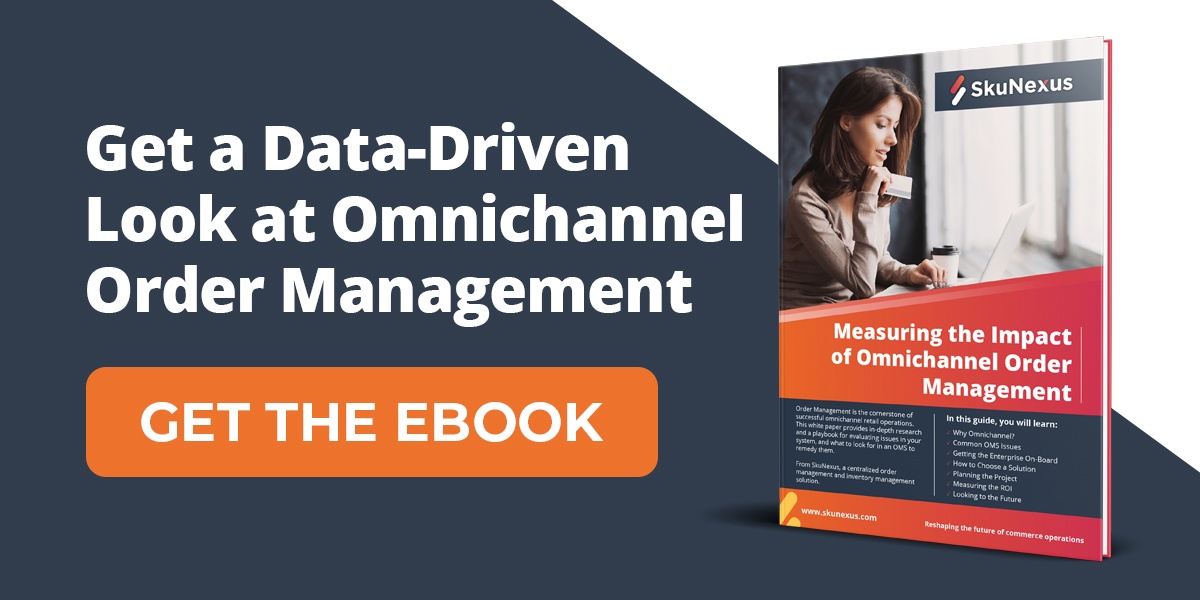You can grow ecommerce revenue to grow your business, but there are other ways to increase your profit.
Let's start off by establishing what this article doesn't cover. This isn't about being more productive, negotiating with suppliers or decreasing expenses.
Instead, we'll concentrate on what to do if you need more sales revenue to increase your e-commerce income - especially useful to marketing, e-commerce, or conversion rate optimization specialists.
Let's clear up some definitions as well:
- Sales is how much of a product or service you sell.
- Revenue means the amount of money your sales bring into your coffers.
- Income is revenue minus the costs.
Improving Marketing Conversion Rates to Increase Revenue
Planning your sales strategies helps you learn the right balance for your business and grow e-commerce revenue. Concentrate on the following to optimize your results:
- Marketing
- Pricing
- Distribution Channels
- Conversion
1. Increase Your Marketing
The most straightforward way to increase sales is to increase your marketing investment.
Place more ads strategically, using careful planning, and test new marketing tactics. Then, get some results and verify that your efforts are translating to more sales.
Marketplace research helps you tap into the pulse of your target audience, so go ahead and run ads and promos in limited locations so that you can measure the results before setting larger in each segment. Discount coupons, electronic codes and traffic monitoring will give you quantitative feedback on your efforts.
2. Review Your Pricing Strategies
Find out whether your product is price sensitive fixing a comprehensive pricing strategy. Your pricing needs to be in the same range as your competitors and still allow you to make a profit.
Lowering your prices generates more revenues despite lower margins.
Increasing prices can improve the perceived value of your product in the hearts and minds of customers.
Price increases widen your margin while increasing sales. Pull this lever carefully, and it can be beneficial, but don't pull too hard or too fast.
3. Expand Your Distribution Channels
Change where you sell your product to impact both sales and revenue without changing your marketing.
Study the effects of online marketing on your sales volumes, gross margin and bottom line. In many cases, distribution channels changes can have a dramatic, positive impact on profitability.
4. Conversion: You Got Them to Your Site, Now What?
When you've maximized the traffic with justifiable ad spend, it might be time for a testing strategy on your conversions. Test everything on your site including:
- Strategically reduce choices in your product filters
- Eliminate abandonment at checkout
- Use a popup to encourage further purchases
- Encourage great reviews on rating sites and social medium (word of mouth = word of click)
- Personalize referral traffic via your welcome bar
- Test your e-commerce storefront for dead links and fix or delete them
- Sell off-Site using multi-channel distribution
Where's Your Revenue Coming from Today?
Match your best selling products with less desirable, related products you want to move out of inventory.
For example, if your online storefront sells fashion scarves three times better than your other items, exploit the popular item to grow ecommerce revenue across the board.
- Increase advertising on the popular scarves to get more people to the site.
- Add more scarves for a wider selection as well as high margin verticals, such as purses and jewelry.
- Create discounts and deals on the big sellers.
- Monitor how fast your strategies begin to move dead inventory and increase profitability, then tweak as needed.
You can take this approach with virtually any product.
Buddy Up to Your Preferred Suppliers
Another angle to approach can also lead to cost decreases with suppliers. Your research should include building relationships with the suppliers of your top products.
If one or two items from your preferred suppliers sell well, it's worth taking a chance on other items they produce. Push traffic to the new items and pair them with products that are already selling.
Once you establish a good relationship both personally and professionally, find out how to get discounts and a first look at any new merchandise they make available.
You can each build a unique product and let your audience be the first to buy it.
Measure the Success of Various Marketing Efforts
Focus your ad dollars on the most lucrative channels, but first, measure and define them. These are the most commonly measured ones:
- Organic search
- Direct traffic
- Social media
- Paid channels
Here are key metrics that help you divide your marketing budget wisely:
- Number of sales per channel
- Revenue generated by each channel
- Average sale amount per channel
This should not be a session of mental gymnastics, simply focus on the area where a moderate effort can yield a significant result.
First, look for the highest and lowest channels to test the limits.
This can be done via personalized messages on the storefront and at checkout, coupon campaigns and other strategies to get them to your site and through a fully executed check out.
Social Advertising
Facebook ads, as well as Instagram are great sales channels with a low cost per conversion and are great ways to increase product awareness while delivering content your target audience wants.
For about $10 a day, you can utilize detailed tools to help you launch a small, customized campaign. When you're ready try to scaffold your spend so that your best ads move up the chain from CPC or CPL to CPM so you continue to optimize your advertising at minimal costs.
Influencer Marketing
Identify influencers who matter to your customers - not everybody relates to the Kardashians.
Some affiliations are obvious, such as recruiting athletes for sneakers and sports drinks, and others are more subtle. Here is some great information on how to find, approach and sign the celebrities and corporate or other influencers that your customers will respond to.
Rewards and Loyalty
Not every will have a fancy store card like Best Buy and other brick and mortar stores.
You're an e-commerce operation and your reward and loyalty point systems should have the bells and whistles only digital media allows. Gamify purchases so that visitors have a chance to "win" discounts and freebies.
This is a great way to attract new prospects and solidify brand loyalty. When you design these campaigns, appeal to existing users first because current customers spend 67 percent more than new ones.
Fixing the Abandoned Cart
Amazon reminds you of cart items you haven't purchased because 75% of visitors put items in a cart don’t purchase them. That's insane!
You can reach out to them via email and notification and on-page gizmos to draw attention to the waiting items.
Here are some other strategies to reduce cart abandonment. We'll dive into them in another article.
Video Content
A picture may be worth 1,000 words but it doesn't matter if no one if looking at it.
The Japanese use anime and strobe-like effect to get kids attention for television advertisements and it can be quite overwhelming. However, video does have its place in online advertising.
A video of your product in action can cause a tremendous amount of interest and social media buzz can create a tsunami of viral shares of funny or interesting videos featuring your product.
Research shows that video helps 73 percent of prospects buy a product.
Get Help Selling Your Products
Add products customers recommend on your website. This creates a powerful connection and encourages l and shares of every variety, depending on the product.
Dropshippers
Is your fulfillment or warehouse business your pride and joy? Maybe you should consider paying professional sales staff to sell your products, so you can concentrate on storing and shipping them. If sales is your forte, consider working for a product-centric company, then let them selling their products while they store and ship them.
With many ways to grow your revenue, you can begin to scale up quickly with the marketing and other strategies detailed above. Revamp your operations just in time to take advantage of holiday spending and getting an early start gives you time to test various plans of attack.
Get more insight into the data behind omnichannel fulfillment with our free guide: Data-Driven Look at Omnichannel Management.









